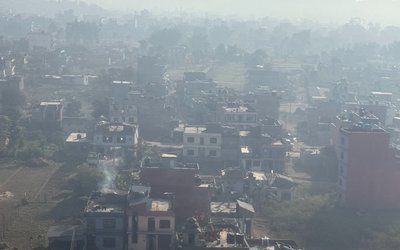
Despite so many complications in internal and external sectors of the economy, including rising fuel prices globally, declining remittances and surging US dollar against Nepali currency, Nepal’s economic growth in 2019 is likely to be 5.4 percent.
As Nepal is implementing the federal structure, this is the first fiscal year of budget based on provinces, local levels and center. Despite the allocation of budget to local levels and provinces, these units are yet to spend the budget in development as expected. The relatively good monsoon and other factors do work well.
According to a press release issued by ADB, the agriculture sector is likely to grow from 2.8% in FY2018 to 3.5% in FY2019, on the back of an anticipated bumper harvest supported by a good monsoon. The industry sector is expected to expand by 7.2% in FY2019, buoyed by improved electricity supply. And the services sector is likely to grow by 6.1% in FY2019 with the expansion of wholesale and retail trade, financial intermediation and travel and tourism subsectors.

The update says inflation is projected to rise to 6.0% in FY2019 from 4.2% in FY2018, partly reflecting higher inflation expected in India, a modest rise in oil prices, and higher government expenditures under the new federal structure.
Though revenue collection of Nepalese Rupees 731.4 billion (24.3% of GDP) slightly exceeded the budget target in FY2018, the fiscal deficit widened to 6.7% of GDP with the rise in government expenditures compared to the previous year. While capital expenditures increased by 28.0% in FY2018 with the execution rate at 79.7%, the hasty nature of spending has continued undermining the quality of capital projects, says the update.
Nepal increasingly faces the risk of external sector instability due to a rising trade and current account deficit. The current account deficit of $2.4 billion (8.2% of GDP) in FY2018 is significantly higher than the deficit of $95.7 million, or 0.4% of GDP, a year earlier. The merchandise trade deficit increased on higher import of construction materials and capital goods in FY2018. While remittance has shown a healthy growth, a substantial rise in the near future is unlikely to offset the rise in the trade deficit, leading to further widening of the current account gap.
The Macroeconomic Update said that Nepal’s economy is anticipated to grow by 5.5% (at basic prices) in fiscal year (FY) 2019, down from 5.9% a year earlier.
“The growth forecast represents a continued trend reversal but is substantially higher than the average rate of 4.3% in the last 10 years (FY2009-FY2018),” said Sharad Bhandari, ADB’s Principal Economist for Nepal. “Growth will be supported by expectations of greater political stability following the 2017 elections, normal monsoon, and efforts to accelerate implementation of mega infrastructure projects.”
The limited capacity at subnational levels and challenges to smooth implementation of federalism may pose risks to growth. According to the update, some of the major issues affecting the smooth implementation of fiscal federalism are slow progress in requisite legislation and deployment of staff, the need for further clarification of mandates and responsibilities of the three tiers of government, and inconsistencies in revenue mobilization regarding fees and taxes at local levels.
- MELAMCHI WATER SUPPLY: No Interruption During Monsoon
- Jun 25, 2025
- KOREAN RETURNEES: Successful Integration
- Jun 25, 2025
- UPPER TRISHULI-1: Engaging With Local
- Jun 25, 2025
- IME GROUP: Twenty Five Years Of Journey
- Jun 24, 2025
- NEPAL’S AIR POLLUTION: A Growing Health Concern
- Jun 24, 2025















